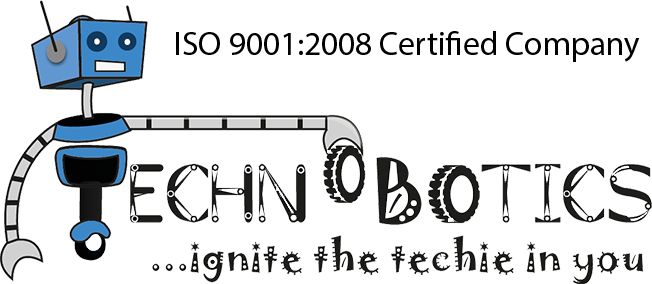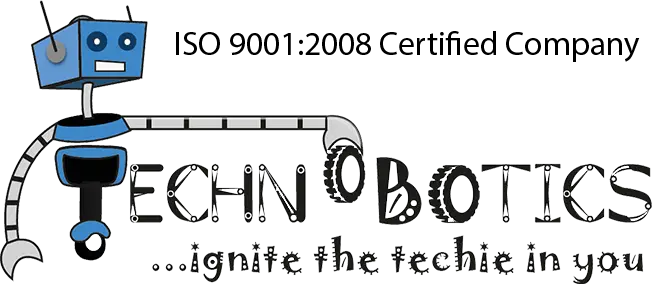STEM education has emerged as a critical component of educational systems worldwide. As we navigate the complexities of the 21st century, the future of STEM education holds immense promise and potential, with several key trends shaping its trajectory. Through efficient guidance from experts, as at Technobotics, students are being offered the best STEM activities for students in recent years!
The Future Of STEM Education
Firstly, interdisciplinary approaches will continue to gain prominence. The boundaries between scientific disciplines are becoming increasingly blurred, necessitating a holistic understanding of STEM subjects. Future STEM education curriculum will emphasize integration, encouraging students to explore connections between various fields and apply cross-disciplinary solutions to real-world problems. This approach fosters creativity, critical thinking, and innovation, essential skills for success in a rapidly evolving global landscape.
Technology will play an important role in reshaping STEM education. Advancements such as artificial intelligence, virtual reality, and augmented reality offer immersive learning experiences that engage students in ways traditional methods cannot. Virtual laboratories allow students to conduct experiments safely and affordably, while AI-driven tutoring systems personalize learning, catering to individual needs and pacing. As technology continues to advance, educators must adapt their pedagogical strategies to leverage these tools effectively, ensuring that students are equipped with the digital literacy skills required for the future workforce. Stem activities for students enable students to gain deeper knowledge.
Furthermore, there will be a greater emphasis on experiential learning and project-based approaches in stemeducationcurriculum. Hands-on activities, design challenges, and collaborative projects provide students with opportunities to apply theoretical knowledge in practical contexts, fostering deeper understanding and retention. Additionally, these methods promote teamwork, communication, and problem-solving skills, mirroring the collaborative nature of STEM professions in the real world. As educators recognize the value of experiential learning, we can expect to see a shift towards more student-centered, inquiry-based instructional practices.
Diversity and inclusion will also be central to the future of STEM education. Historically, certain demographic groups, such as women and minorities, have been underrepresented in STEM fields. Addressing this disparity requires proactive efforts to promote inclusivity and equity within educational institutions. Initiatives aimed at encouraging underrepresented groups to pursue STEM careers, providing mentorship and support networks, and challenging stereotypes and biases will be crucial in fostering a diverse STEM workforce that reflects the richness of human talent.
Moreover, global collaboration will be essential in advancing STEM education. In an interconnected world, challenges such as climate change, pandemics, and technological innovation transcend national borders, necessitating collaborative efforts to find solutions. Platforms for international cooperation, exchange programs, and joint research initiatives enable students and educators to engage with diverse perspectives, cultures, and approaches to problem-solving. By fostering a sense of global citizenship and interconnectedness, STEM education can empower future generations to address complex global challenges collaboratively. Technobotics offers the best stem projects for elementary students.
How Will The Role Of Robotics Educators Be?
The role of educators will evolve in response to these trends. Teachers will increasingly serve as facilitators of learning, guiding students through inquiry-based activities and providing mentorship and support. Professional development programs will equip educators with the skills and knowledge needed to implement innovative pedagogical approaches effectively and integrate technology into their teaching practices. Additionally, partnerships between educational institutions, industry stakeholders, and community organizations will provide educators with access to resources, expertise, and real-world experiences that enrich STEM instruction. For in-depth learning projects are required and at Technobotics you will get the best stem projects for elementary students
The future of STEM education also holds promise for lifelong learning. In a rapidly evolving knowledge economy, the acquisition of STEM skills is not limited to formal education but extends throughout one’s life and career. Continuous learning opportunities, such as online courses, workshops, and professional development programs, enable individuals to upskill, reskill, and adapt to changing demands in the workforce. Lifelong learning fosters a culture of innovation and agility, empowering individuals to thrive in an ever-changing world.
Some Challenges To Address
However, several challenges must be addressed to realize the full potential of STEM education in the future. Access and equity remain persistent issues, with disparities in educational resources and opportunities disproportionately affecting marginalized communities. Efforts to bridge the digital divide, provide equitable access to quality STEM education, and address systemic barriers to participation are essential for creating an inclusive STEM ecosystem.
Additionally, there is a growing need to promote ethical literacy in STEM education. As technology becomes increasingly intertwined with every aspect of society, ethical considerations surrounding issues such as data privacy, algorithmic bias, and the societal impact of scientific advancements become increasingly important. Future STEM curricula must incorporate discussions on ethics, responsibility, and the societal implications of technological innovation to empower students to navigate ethical dilemmas in their future careers.
The future of STEM education holds immense promise for preparing students to thrive in a complex, interconnected world. By welcoming interdisciplinary approaches, leveraging technology, promoting diversity and inclusion, fostering global collaboration, and prioritizing lifelong learning, STEM education can empower individuals to become critical thinkers, problem solvers, and innovators capable of addressing the grand challenges of the 21st century. However, to realize this vision, concerted efforts are needed to address challenges related to access, equity, ethics, and the evolving role of educators in STEM instruction. Through collaborative action and a commitment to excellence, we can shape a future where STEM education is truly transformative, empowering individuals and societies to reach new heights of discovery and innovation.
Importance Of Coding In STEM Education
Coding is a fundamental component of STEM education due to its role in promoting computational thinking, interdisciplinary applications, digital literacy, innovation, career readiness, critical thinking, problem-solving, collaboration, and communication. By integrating coding into STEM curricula, experts at Technobotics prepare students for success in a technology-driven world, empowering them to become informed citizens, skilled professionals, and lifelong learners in the digital age. Connect with us today and experience the ultimate world of Robotics technology shaping you and your future!
The Future Of STEM Education
Firstly, interdisciplinary approaches will continue to gain prominence. The boundaries between scientific disciplines are becoming increasingly blurred, necessitating a holistic understanding of STEM subjects. Future STEM education curriculum will emphasize integration, encouraging students to explore connections between various fields and apply cross-disciplinary solutions to real-world problems. This approach fosters creativity, critical thinking, and innovation, essential skills for success in a rapidly evolving global landscape.
Technology will play an important role in reshaping STEM education. Advancements such as artificial intelligence, virtual reality, and augmented reality offer immersive learning experiences that engage students in ways traditional methods cannot. Virtual laboratories allow students to conduct experiments safely and affordably, while AI-driven tutoring systems personalize learning, catering to individual needs and pacing. As technology continues to advance, educators must adapt their pedagogical strategies to leverage these tools effectively, ensuring that students are equipped with the digital literacy skills required for the future workforce. Stem activities for students enable students to gain deeper knowledge.
Furthermore, there will be a greater emphasis on experiential learning and project-based approaches in stemeducationcurriculum. Hands-on activities, design challenges, and collaborative projects provide students with opportunities to apply theoretical knowledge in practical contexts, fostering deeper understanding and retention. Additionally, these methods promote teamwork, communication, and problem-solving skills, mirroring the collaborative nature of STEM professions in the real world. As educators recognize the value of experiential learning, we can expect to see a shift towards more student-centered, inquiry-based instructional practices.
Diversity and inclusion will also be central to the future of STEM education. Historically, certain demographic groups, such as women and minorities, have been underrepresented in STEM fields. Addressing this disparity requires proactive efforts to promote inclusivity and equity within educational institutions. Initiatives aimed at encouraging underrepresented groups to pursue STEM careers, providing mentorship and support networks, and challenging stereotypes and biases will be crucial in fostering a diverse STEM workforce that reflects the richness of human talent.
Moreover, global collaboration will be essential in advancing STEM education. In an interconnected world, challenges such as climate change, pandemics, and technological innovation transcend national borders, necessitating collaborative efforts to find solutions. Platforms for international cooperation, exchange programs, and joint research initiatives enable students and educators to engage with diverse perspectives, cultures, and approaches to problem-solving. By fostering a sense of global citizenship and interconnectedness, STEM education can empower future generations to address complex global challenges collaboratively. Technobotics offers the best stem projects for elementary students.
How Will The Role Of Robotics Educators Be?
The role of educators will evolve in response to these trends. Teachers will increasingly serve as facilitators of learning, guiding students through inquiry-based activities and providing mentorship and support. Professional development programs will equip educators with the skills and knowledge needed to implement innovative pedagogical approaches effectively and integrate technology into their teaching practices. Additionally, partnerships between educational institutions, industry stakeholders, and community organizations will provide educators with access to resources, expertise, and real-world experiences that enrich STEM instruction. For in-depth learning projects are required and at Technobotics you will get the best stem projects for elementary students
The future of STEM education also holds promise for lifelong learning. In a rapidly evolving knowledge economy, the acquisition of STEM skills is not limited to formal education but extends throughout one’s life and career. Continuous learning opportunities, such as online courses, workshops, and professional development programs, enable individuals to upskill, reskill, and adapt to changing demands in the workforce. Lifelong learning fosters a culture of innovation and agility, empowering individuals to thrive in an ever-changing world.
Some Challenges To Address
However, several challenges must be addressed to realize the full potential of STEM education in the future. Access and equity remain persistent issues, with disparities in educational resources and opportunities disproportionately affecting marginalized communities. Efforts to bridge the digital divide, provide equitable access to quality STEM education, and address systemic barriers to participation are essential for creating an inclusive STEM ecosystem.
Additionally, there is a growing need to promote ethical literacy in STEM education. As technology becomes increasingly intertwined with every aspect of society, ethical considerations surrounding issues such as data privacy, algorithmic bias, and the societal impact of scientific advancements become increasingly important. Future STEM curricula must incorporate discussions on ethics, responsibility, and the societal implications of technological innovation to empower students to navigate ethical dilemmas in their future careers.
The future of STEM education holds immense promise for preparing students to thrive in a complex, interconnected world. By welcoming interdisciplinary approaches, leveraging technology, promoting diversity and inclusion, fostering global collaboration, and prioritizing lifelong learning, STEM education can empower individuals to become critical thinkers, problem solvers, and innovators capable of addressing the grand challenges of the 21st century. However, to realize this vision, concerted efforts are needed to address challenges related to access, equity, ethics, and the evolving role of educators in STEM instruction. Through collaborative action and a commitment to excellence, we can shape a future where STEM education is truly transformative, empowering individuals and societies to reach new heights of discovery and innovation.
Importance Of Coding In STEM Education
- Computational Thinking: Learning to code promotes computational thinking, which involves breaking down complex problems into smaller, more manageable parts. This problem-solving approach is foundational in all STEM disciplines, helping students develop logical reasoning, algorithmic thinking, and the ability to analyze and solve problems systematically.
- Interdisciplinary Applications: Coding transcends disciplinary boundaries, finding applications in fields ranging from mathematics and physics to biology and engineering. By learning to code, students gain transferable skills that are applicable across various STEM domains, enabling them to explore interdisciplinary connections and pursue diverse career pathways.
- Innovation and Creativity: Coding fosters creativity and innovation by providing a platform for experimentation and exploration. Through coding, students can bring their ideas to life, develop prototypes, and create solutions to real-world problems. Whether they are designing video games, building robots, or developing mobile apps, coding empowers students to express their creativity while honing their technical skills.
- Career Opportunities: Proficiency in coding opens doors to a wide range of career opportunities in STEM fields. From software development and data analysis to cybersecurity and artificial intelligence, coding skills are in high demand across industries. By introducing coding in STEM education, schools prepare students for future careers in technology-driven fields, equipping them with the skills and knowledge needed to succeed in the digital economy.
- Critical Thinking and Problem Solving: Coding challenges students to think critically and solve problems creatively. Debugging code, troubleshooting errors, and optimizing algorithms require perseverance, resilience, and the ability to think analytically. By grappling with coding challenges, students develop valuable problem-solving skills that are essential in all STEM disciplines and beyond.
- Collaboration and Communication: Coding projects often involve collaboration and teamwork, mirroring the collaborative nature of STEM professions in the real world. Whether they are collaborating on open-source software projects or participating in hackathons, students learn to communicate effectively, share ideas, and work together towards common goals. Collaboration fosters interpersonal skills, teamwork, and a sense of community, all of which are essential in STEM education and professional practice.
Coding is a fundamental component of STEM education due to its role in promoting computational thinking, interdisciplinary applications, digital literacy, innovation, career readiness, critical thinking, problem-solving, collaboration, and communication. By integrating coding into STEM curricula, experts at Technobotics prepare students for success in a technology-driven world, empowering them to become informed citizens, skilled professionals, and lifelong learners in the digital age. Connect with us today and experience the ultimate world of Robotics technology shaping you and your future!


